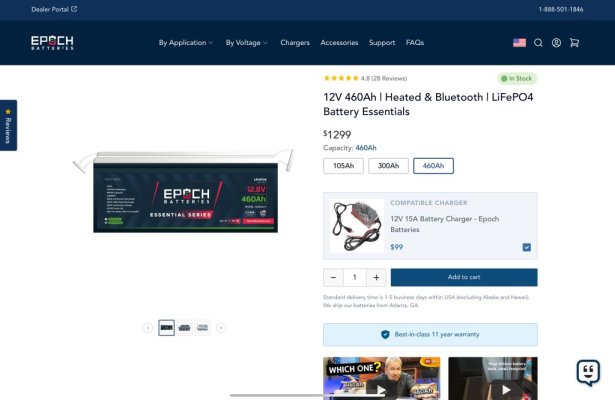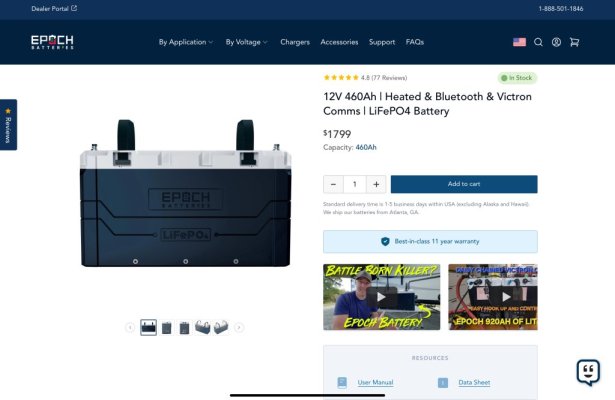mliemon2
Veteran Member
- Joined
- Apr 9, 2021
- Messages
- 36
- Vessel Name
- Scout
- Vessel Make
- Grand Banks EU 47
My house bank needs to be replaced, and I'm thinking of swapping from 4x 6v L16 AGM batteries (@120 lbs each) to 8x 6v AGM golf cart batteries (@55 lbs each) for easier replacement and handling. In fact comparing the amp hours, the GC2 batteries would get me 880 AH vs the 800 AH (at 12V) that I currently have. I'm trying to figure out if there's any downside?.... it doesn't seem like it? Other then I'll need to build a shelf to store them all. Anyone have any insight?
Thank you!
Thank you!


